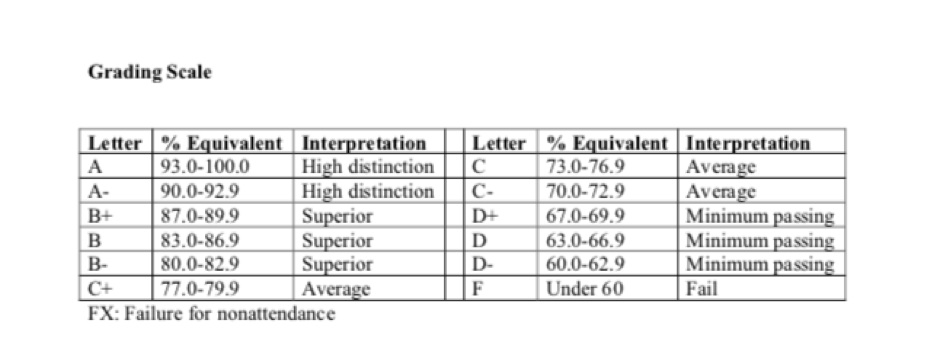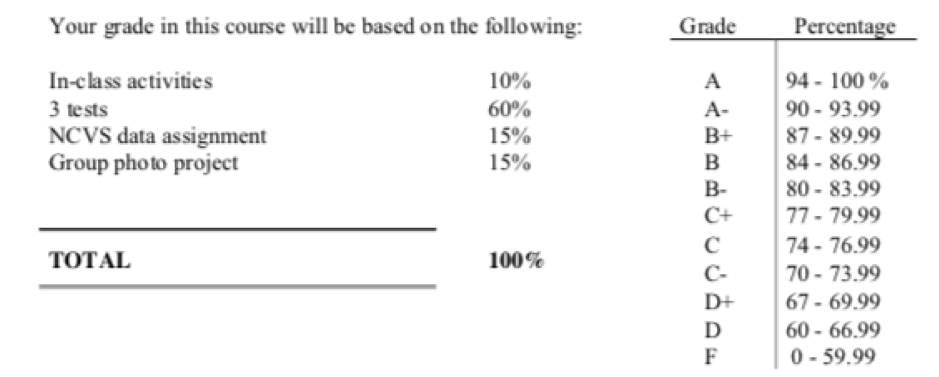SOC 348 Urban Sociology
Instructor: Dr. Robert Adelman
This course explores urban trends and city life, where poverty concentrates and the sources of inequality in urban areas as well as its impact on the spatial patterns of metropolitan areas. This module is generally quite interesting, though it did start off dry because of all the technical definitions that we had to learn but otherwise it picked up quite fairly towards the end. The readings for this class were all good reads and Dr. Adelman made it a point to include readings on Singapore as well, which were all very relatable and insightful. We learned about gentrification, jobs, social class, women and their role in cities and theoretical perspectives. The work load for this module was very manageable, especially in Summer.

Components :
Attendance, In Class Assignments : 20%
Exams 1, 2 and 3 : 20% (Total 60%)
Group Project Assignment: 20%
Attendance, In Class Assignments
For the attendance and in class assignments, all you have to do is turn up for class every single time and make sure you are present when it comes to signing in on the attendance sheet. In class assignments are basically questions you answer on the readings. Fairly easy.
Exams 1, 2 and 3
The exams are manageable as well. Each exam covers roughly around 4 to 5 chapters each and Dr. Adelman makes it a point to reward you marks for questions that may be vague or where the majority gets it wrong. This means that you will most likely get more points for each exam.
Group Project Assignment
As for the group project assignment, you will be assigned to groups and basically just write a 7 page paper on a neighbourhood of your choice. You just need to take photographs of the neighbourhood, find an article about the area and one important issue in that community (Eg. Lack of accessible public transport, gentrification, employment etc). You also need to interview an individual from the neighbourhood and write about its public spaces. This project is not difficult at all, considering you will have at least 5 to 6 members contributing. I actually found this to be quite an enjoyable experience with my group personally and we really learned a lot from the works of the other groups as well. You are expected to present your findings to the class as well, but professor is very nice about it and does not expect everyone in the group to present – you are free to choose who would like to present.
I found professor Adelman to be a very nice individual and actually ended up enjoying this module despite my initial apprehension. It started off slow but picked up towards the end and we always had interesting videos to watch in class. Though the class may be long, it is a module that’s worth exploring.
My grade for this course: A
SOC 327 Victims and Victimisation
Instructor: Dr. Mary Nell Trautner
This module focuses on victims of crime, the emotional and social psychological consequences associated with victimisation and fear of victimisation. You will develop an understanding of the impact of crime on victims and communities, the relationship (and overlap) between victims and offenders, as well as the victim’s treatment, roles, and rights in the criminal justice system. You will also examine the social construction of victimization, including how race, gender, and class shape societal response to harm and victimization, and how and why society defines certain harmful acts as more serious than others, and some victims as more important than others.

In Class activities (10%)
Basically questions on the readings and some film responses. Easy 10%.
Exams 1,2 and 3 (60%)
Exams are manageable, though I would say that Mary Nell’s exams are usually tricky and thus it would be good to review your content properly beforehand. She does reward you marks as well for questions that are debatable.
NCVS Data Assignment (15%)
This assignment was one of the easiest and will not take up much of your time. You are expected to basically use the National Crime Victimisation Survey to document and interpret a victimisation trend (i.e why do you think such crimes occur based on the data). All you have to do is insert the data and graphs and interpret accordingly. Assignment is only 2 pages long.
Group Photo Project (15%)
For this project, it is also very easy. All you have to do is take a photograph and come up with a caption that relates to the photo and how it is applicable to the concepts that you have learned in class. The initial brainstorming for the concept might take a while, but otherwise it is fairly easy. All the photos will be displayed museum style at the end of the course where other groups will evaluate your photos and caption. Fun project really!
I personally enjoy Mary Nell’s classes, but this module fell a little short on my interest. Nonetheless, still a module worth exploring. The only difficult component of this class is really just the exams mainly. Otherwise, it is manageable.
My grade for this course: B+
Pingback: Summer 2019 | My SIM-UB Academic Journey